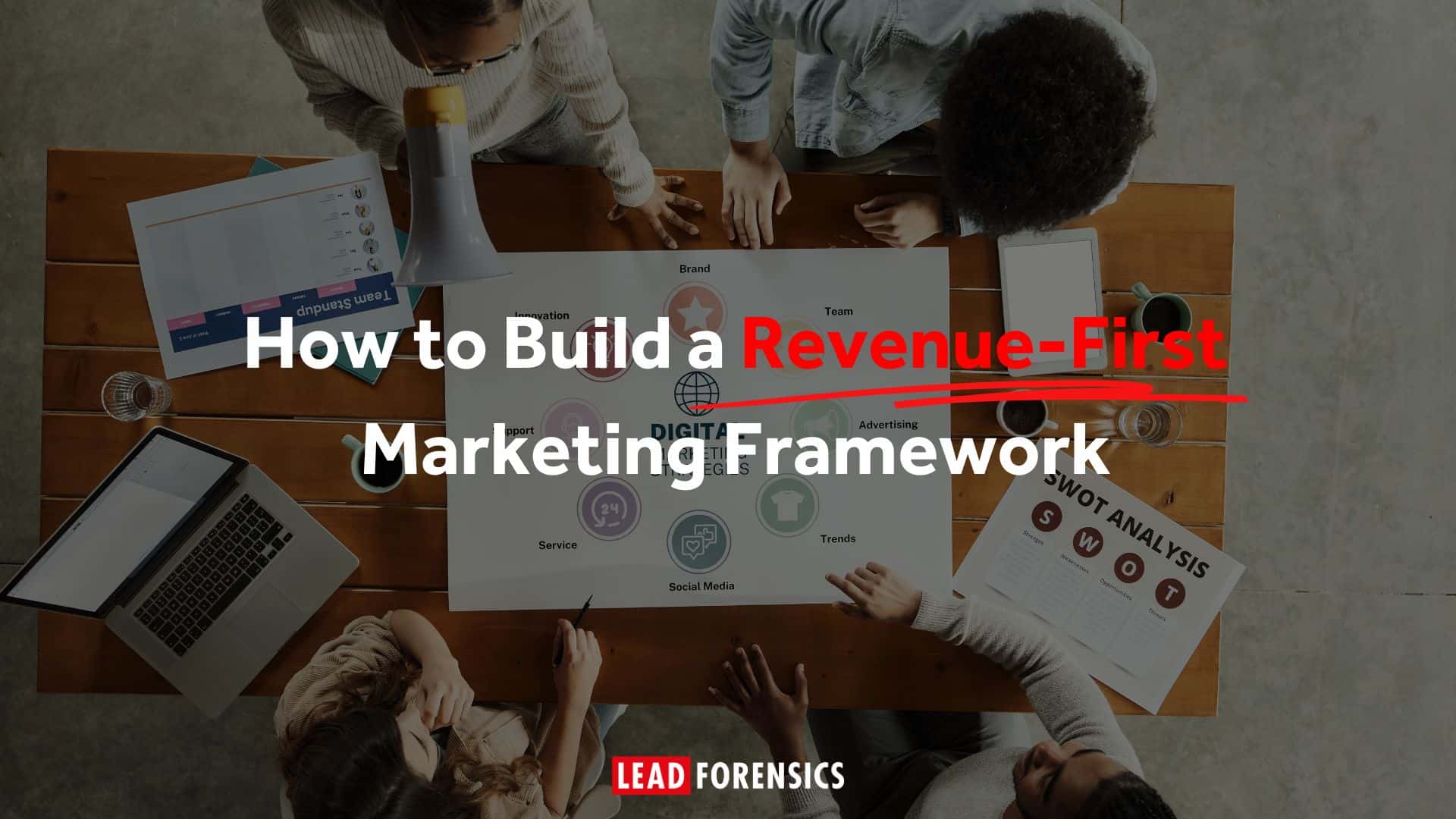Understanding the Importance of a Lead Management Process
Effective lead management serves as the backbone of any successful sales operation. It involves a systematic approach to capturing, nurturing, and converting leads into paying customers. Without a structured process in place, businesses risk losing valuable opportunities and wasting valuable resources.
But what exactly does a lead management process entail? Let’s dive deeper into the intricacies of this crucial aspect of sales operations.
The Role of Lead Management in Sales
A robust lead management process ensures that sales teams have a steady inflow of potential customers to engage with. By properly managing leads, sales representatives can focus their efforts on leads that are most likely to convert into closed deals. This increases efficiency, productivity, and ultimately, revenue generation.
But how does lead management actually work? Let’s take a closer look.
First and foremost, lead management involves generating leads that you can capture. This can be done through various channels such as website forms, social media campaigns, or even offline events. Once leads are captured, they need to be organized and categorized based on their level of interest and potential to convert. This allows sales teams to prioritize their efforts and allocate resources effectively.
Next comes the nurturing stage. This is where businesses engage with leads through targeted marketing campaigns, personalized emails, and relevant content. The goal is to build a relationship with the leads, establish trust, and educate them about the value of the products or services being offered. By nurturing leads, businesses increase the chances of converting them into paying customers.
Finally, the conversion stage is where the magic happens. Once a lead has been sufficiently nurtured, it’s time for the sales team to step in and close the deal. This involves personalized sales pitches, negotiations, and addressing any concerns or objections the lead may have. With an effective lead management process in place, businesses can streamline this conversion process and increase their deal closure rates.
How Effective Lead Management Impacts Deal Closure
When leads are managed effectively, the chances of closing deals significantly improve. By implementing a lead management process, businesses can identify and prioritize high-quality leads, which fosters timely communication and personalized engagement. This targeted approach increases the likelihood of converting leads into customers, resulting in higher deal closure rates.
Furthermore, effective lead management allows businesses to track and analyze their sales pipeline. By monitoring key metrics such as conversion rates, average deal size, and sales cycle length, businesses can identify areas for improvement and make data-driven decisions to optimize their sales process.
In conclusion, a well-executed lead management process is essential for any business looking to maximize their sales potential. By capturing, nurturing, and converting leads effectively, businesses can increase their revenue, improve their deal closure rates, and ultimately, achieve long-term success.
Key Components of a Successful Lead Management Process
A successful lead management process consists of several key components that work together to streamline the sales journey. Let’s explore these components in detail:
Identifying and Capturing Leads
The first step in lead management is identifying potential leads. This involves leveraging various channels such as marketing campaigns, website analytics, social media, and events to generate leads. By utilizing targeted advertising and content marketing strategies, businesses can attract potential customers who are interested in their products or services.
Once identified, leads need to be captured and entered into a centralized database for further nurturing and follow-up. This database serves as a valuable resource for sales teams, providing them with a comprehensive view of each lead’s information and interactions with the company.
Furthermore, implementing lead capture forms on websites and landing pages can help businesses collect relevant data from potential customers. These forms can be customized to gather specific information, such as name, email address, phone number, and even preferences or interests, providing businesses with valuable insights to tailor their marketing and sales approach.
Lead Scoring and Prioritization
Lead scoring is a vital aspect of lead management that helps prioritize leads based on their likelihood to convert into customers. By assigning a score to each lead based on factors such as demographic information, engagement level, and behavior, sales teams can allocate their time and resources more efficiently.
For example, a lead who has shown high engagement by repeatedly visiting the website, downloading resources, and interacting with the company’s social media posts may receive a higher lead score. On the other hand, a lead who has only visited the website once and has not engaged with any of the company’s content may receive a lower score.
By prioritizing leads based on their score, sales teams can focus their efforts on leads that are more likely to convert, increasing their chances of closing deals and maximizing their productivity.
Nurturing and Following Up on Leads
Nurturing leads involves building relationships with leads over time through targeted communication and valuable content. This ensures that leads stay engaged and progress through the sales funnel. By providing relevant and personalized content, businesses can establish themselves as industry experts and trusted advisors in the eyes of their leads.
One effective way to nurture leads is through email marketing campaigns. By segmenting leads based on their interests, demographics, or previous interactions, businesses can send targeted emails that provide value and address specific pain points or challenges faced by their leads.
Well-timed follow-ups also play a crucial role in keeping your brand top of mind and increasing the chances of conversion. Sales teams can utilize customer relationship management (CRM) software to schedule follow-up tasks and reminders, ensuring that no lead falls through the cracks.
Additionally, businesses can leverage marketing automation tools to automate certain aspects of lead nurturing, such as sending personalized follow-up emails or triggering specific actions based on lead behavior. This not only saves time but also ensures consistent and timely communication with leads.
In conclusion, a successful lead management process involves identifying and capturing leads, lead scoring and prioritization, as well as nurturing and following up on leads. By implementing these key components, businesses can effectively manage their leads, increase conversion rates, and ultimately drive revenue growth.
Building Your Own Lead Management Process
Now that we understand the importance of lead management, let’s dive into how you can build your own process to suit your business needs:
Defining Your Sales Funnel Stages
Start by mapping out your sales funnel stages. This is a critical step in building an effective lead management process. By clearly defining each stage, you can identify the key touchpoints and actions required to move leads from one stage to another.
For example, the first stage could be “Awareness,” where leads are just becoming familiar with your brand. The touchpoints in this stage might include website visits, social media interactions, or attending a webinar. The next stage could be “Interest,” where leads show a deeper interest in your product or service. Here, touchpoints might include downloading a whitepaper, requesting a demo, or subscribing to your newsletter.
By identifying these touchpoints, you can gain a clear understanding of where each lead stands in the sales process. This understanding facilitates effective decision-making and allows you to tailor your approach to each lead based on their stage in the funnel.
Setting Up a Lead Scoring System
Once you have defined your sales funnel stages, the next step is to establish a lead scoring system. This system assigns values to different lead attributes and actions to prioritize leads for follow-up.
For example, you might assign a higher score to leads who have interacted with your brand multiple times or have requested a demo. On the other hand, leads who have only visited your website once or have not engaged with your content might receive a lower score.
By implementing a lead scoring system, you can ensure that your sales team focuses their efforts on the most promising leads. This not only increases efficiency but also improves the chances of converting leads into customers.
Implementing a Lead Nurturing Strategy
Creating a lead nurturing strategy is another crucial aspect of building your own lead management process. This strategy involves regularly communicating with leads to address their pain points, educate them about your product or service, and provide value at every stage of their buyer’s journey.
One effective way to nurture leads is through personalized emails. By segmenting your leads based on their interests, demographics, or behavior, you can send targeted emails that resonate with each group. These emails can provide valuable information, address common challenges, or offer exclusive promotions.
In addition to emails, you can also use informative content to nurture leads. This could include blog posts, ebooks, or webinars that provide in-depth knowledge about your industry or specific topics related to your product or service. By positioning yourself as a trusted authority, you can build credibility and strengthen the relationship with your leads.
Furthermore, offering targeted offers can also be a powerful lead nurturing tactic. By analyzing your leads’ behavior and preferences, you can provide them with personalized offers that align with their needs and interests. This not only increases the chances of conversion but also demonstrates that you understand and value your leads’ individual requirements.
Remember, lead nurturing is an ongoing process. Regularly evaluate and refine your lead nurturing strategy to ensure that it remains effective and aligned with your business goals.
Leveraging Technology in Lead Management
Technology plays a pivotal role in optimizing lead management processes. In today’s digital age, businesses are constantly looking for ways to leverage technology to gain a competitive edge. Let’s explore some key technological tools that have revolutionized lead management:
Website Visitor Tracking
Lead Forensics is a cutting-edge website visitor identification software that plays a pivotal role in refining the B2B lead management process, enhancing the ability to close deals effectively. By harnessing its advanced capabilities, businesses can transcend traditional lead tracking methods. Lead Forensics identifies anonymous website visitors, transforming them into actionable leads by offering comprehensive insights into their browsing behavior and company details.
One of the software’s standout features is its lead scoring functionality. By analyzing visitor engagement, demographics, and company data, Lead Forensics assigns scores that gauge the potential conversion probability of each lead. This empowers sales teams to focus their efforts on high-value prospects, optimizing resource allocation and shortening sales cycles.
Moreover, Lead Forensics aids in prioritizing leads by providing real-time notifications about key prospects visiting the website. This timely information equips sales professionals with the context needed to tailor their outreach strategies, thereby increasing the chances of successful conversions.
In the realm of B2B lead management, Lead Forensics emerges as an invaluable asset, revolutionizing lead scoring and prioritization to drive enhanced deal closures.
Want to know more about Lead Forensics? Book a demo here today!
The Role of CRM in Lead Management
A Customer Relationship Management (CRM) system is a powerful tool that helps streamline lead management by centralizing lead data, automating tasks, and providing valuable insights into lead behavior. With a CRM in place, businesses can effectively manage their leads and track their progress throughout the entire sales cycle.
One of the key benefits of using a CRM is that it enables sales teams to have a 360-degree view of their leads. They can easily access important information such as contact details, previous interactions, and purchase history. This comprehensive view allows sales representatives to personalize their approach and tailor their communication to the specific needs and preferences of each lead.
Furthermore, a CRM system enhances collaboration between marketing and sales teams. By having a centralized platform to share and access lead data, both teams can work together seamlessly. Marketing teams can analyze the data to identify trends and patterns, which can then be used to create targeted marketing campaigns. Sales teams, on the other hand, can use the insights provided by the CRM to prioritize leads and focus their efforts on the most promising opportunities.
Automation Tools for Efficient Lead Management
In addition to CRM systems, there are various automation tools available that can significantly simplify and streamline lead management processes. These tools automate repetitive tasks, allowing sales teams to save time and focus on building relationships and closing deals.
Email marketing platforms are one such automation tool that can be incredibly useful in lead management. These platforms allow businesses to create and send personalized emails to their leads at scale. Automated email campaigns can be set up to nurture leads, provide valuable information, and ultimately move them further down the sales funnel. By automating email communication, businesses can ensure that leads receive timely and relevant information, increasing the chances of conversion.
Lead tracking software is another valuable automation tool that can help businesses keep track of their leads’ activities and behavior. This software allows businesses to monitor how leads interact with their website, which pages they visit, and what actions they take. By analyzing this data, businesses can gain valuable insights into lead behavior and tailor their marketing and sales strategies accordingly.
Lastly, chatbots have emerged as a popular automation tool in lead management. These AI-powered virtual assistants can engage with leads in real-time, answering their questions, providing information, and even scheduling appointments. Chatbots not only provide immediate assistance to leads but also help businesses capture valuable data and qualify leads based on their responses.
In conclusion, leveraging technology in lead management is essential for businesses looking to stay competitive in today’s digital landscape. CRM systems and automation tools offer a wide range of benefits, from centralizing lead data and automating tasks to providing valuable insights and enhancing collaboration between teams. By embracing these technological tools, businesses can optimize their lead management processes and increase their chances of converting leads into loyal customers.
Measuring the Success of Your Lead Management Process
A successful lead management process requires continuous evaluation and improvement. Gauge the effectiveness of your process using the following:
Key Performance Indicators for Lead Management
Track key performance indicators (KPIs) related to lead management, including lead conversion rate, lead response time, deal closure rate, and customer lifetime value. These metrics provide valuable insights into the efficiency and effectiveness of your lead management process.
Regular Review and Improvement of Your Process
Regularly review and analyze your lead management process to identify areas for improvement. Seek feedback from your sales team, analyze customer interactions, and stay updated on industry best practices. Implement changes and iterate on your process to ensure continuous growth and success.
By creating a comprehensive lead management process tailored to your business, leveraging technology, and continuously evaluating and refining your approach, you can enhance your ability to close more deals and achieve sustainable business growth. Invest the time and resources necessary to optimize your lead management process, and reap the rewards of increased sales and revenue.









